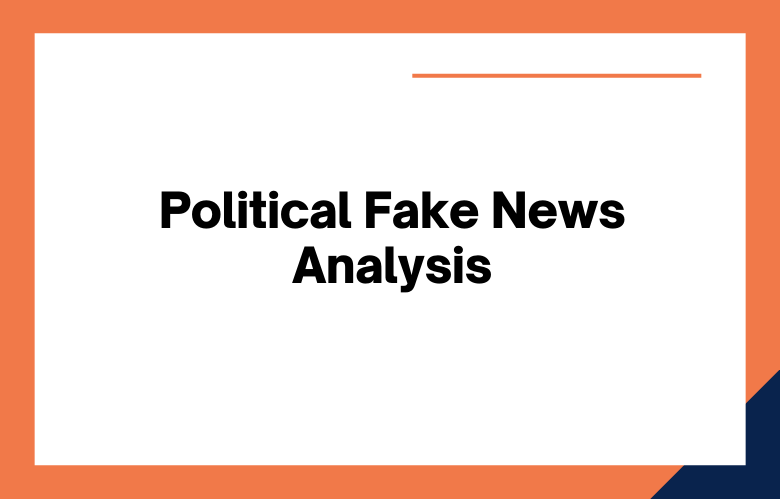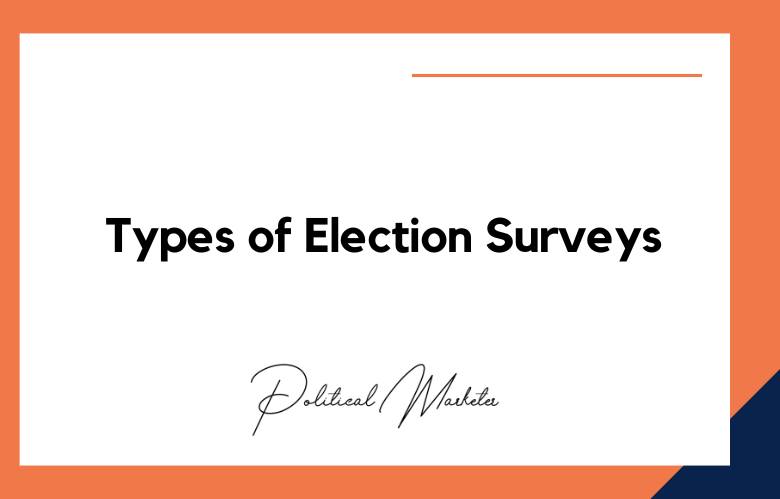Fake political news has been a hot topic of conversation for some time now, but it’s only been discussed in the mainstream media recently. For those who don’t know what I’m talking about, fake news is currently created to be politically persuasive.
It goes viral on social media platforms like Facebook and Twitter because it’s believable. This article will use sentiment analysis to detect fake political news by examining the sentiment expressed within each piece.
Sentiment analysis determines a speaker or writer’s attitude toward a topic, typically by examining linguistic patterns such as individual words.
One way to detect fake news is through sentiment analysis. By analyzing the sentiment of a text, it may be determined whether something said in that text is true or not. Sentiment analysis can detect fake political news, and this article highlights one example from our lab’s work using this technique.
What is Fake News?
Fake news is a plague in today’s media. It tricks people out of their money, and worst of all, it has divided the country!
For years, people have been misinterpreting facts and spreading lies. These days, “fake news” describes false information or stories created to mislead others.
Fake news is information that’s deliberately constructed to deceive someone. It could be a political post on social media, an article in the newspaper, or even an advertisement.
Fake news is content that appears to be truthful but is false.
The term “fake news” was coined in the 18th century to describe satirical news that made fun of political figures and events.
What is Political Fake News?
Political fake news is false information that’s created to influence the public. It can make a political party or candidate look good while discrediting their opponents.
Fake news is a type of journalism that involves creating false stories and distributing them on social media. The goal is to influence public opinion and generate profits for the author.
Fake news is a type of journalism in which the creator or publisher of content fabricates information to deceive its audience. This can be done for money, politics, entertainment, or even propaganda.
Political fake news is false information created to sway political opinion. Social media’s rise in popularity and the current political climate make it easier than ever to spread propaganda.
What is fake news, and how does it work?
Fake news is fabricated content that mimics accurate information and spreads rapidly through social media.
Fake news is false information disguised as real news. It may be shared online through social media sites like Facebook or Twitter or written into an article and published in newspapers.
Fake news is when a website exaggerates the truth to create false stories.
Fake news is usually inaccurate because it was made to deceive or manipulate people purposely. People use phony news for different reasons, such as political gain or just for fun.
Sentiment Analysis for Fake Political News Detection
Sentiment Analysis is an effective tool to detect fake news. This project aimed to develop a sentiment analysis algorithm that can detect if an article fits the criteria for being labeled as fake news, such as articles that are blatantly false and written.
The Fake News Detection system will scan a news article and check whether it is biased toward a particular political figure.
Political Fake News Detection and Analysis
From the beginning, politics has been an area of interest for many. Keeping up with political news is essential because it can change your life in the blink of an eye.
In this era, the top political news stories of the day are usually controversial. They seem up-to-the-minute, but it’s hard for someone with little time to read everything posted and know what sources.
What are the best examples of fake news, and how will they spread?
It’s essential to be careful about what you read. That’s why it is crucial to fact-check anything that sounds too good to be accurate and confirm whether or not the news is real.
Fake news is everywhere. It consists of stories and headlines that people intentionally create, usually to get others excited about a topic or event. There are several ways to spread fake news.
A typical example of fake news is the posts on Facebook, which users make to generate more interaction with their friends.
Fake news has been growing for the past few years. It’s created by people who want to trick others into thinking something untrue. These posts are spread on many social media platforms, including Facebook, Twitter, and Instagram.
Solutions for Combating Fake News in the Future
One solution is for people to check sources of information and facts better. For example, they can look at the date it was published and see if there have been any updates.
Solutions for combating fake news in the future include educating people on identifying unreliable sources, allowing users to flag suspicious stories, and providing more transparency into how algorithms are created.
I believe that technology is the only way to combat fake news properly. A technical solution is the best approach because humans are flawed and cannot be trusted to make unbiased decisions.
Developing a formula for identifying fake news that will be universally accepted should be on the agenda of every government in the world.
How to identify a piece of fake news
One way to tell if a news story is fake is to link to credible sources. Instead, links are provided with “Read more” or “Watch here.”
Check the source. Ensure that what you’re reading is from a reliable news site or newspaper instead of Facebook, Twitter, or Reddit.
Why are people drawn to fake news?
People are drawn to fake news because they want to feel that their beliefs and opinions are correct.
Humans are curious creatures. We want to know everything, but we are also very simple. Information is constantly flowing through the Internet, and sometimes, getting lost in it all is easy.
People are drawn to fake news because they want an entertaining or exciting article. People do not care whether the information is true or false; they care about how it makes them feel.
Some people may be drawn to fake news because it’s entertaining or intriguing. But others are using it to influence their political beliefs.
One of the main reasons why people are drawn to fake news is because it is entertaining. It’s also easy to spread since anyone can easily share a fake online store.
The effect of fake news on the real world, including politics and society
Changing the world is hard. It’s even harder when you’re unsure what’s real and what isn’t.
It is difficult to estimate the impact of fake news on social media, but it has become increasingly popular, and some people have tried to use it for political gain.
Fake news is a growing problem that will continue to affect people of all ages. We must learn how to identify counterfeit articles.
Solutions for avoiding or combating the effects of fake news in your life
One solution that I recommend is to read more often. This will let you decide about the news and information you see on Facebook or other social media sites rather than taking it at face value.
The best way to combat fake news is to practice skepticism. If something doesn’t seem right, research it!
Ways to teach others about identifying and avoiding the impacts of fake news.
An excellent way to teach others about fake news is by explaining what it is and how often it happens. It’s also significant to be aware of who your sources are so that you can understand their bias.
Did you know there are three ways to detect fake news and avoid its impacts? The first is to check sources, the second is to prevent sharing articles without reading them, and lastly, to pay attention to a site’s tone.
One way to teach others about identifying and avoiding the impacts of fake news is by teaching them how to identify a source. If they can tell where an article comes from, they’ll be able to notice if it’s biased or not.
Best Practices to Detect Political Fake News
- Stay current with the news.
- Be skeptical of headlines that are vague or sensationalized
- Check for sources and citations, including hyperlinks to credible articles
- Look at the article’s date- if it is from a reputable source, check if there have been any updates since publication
- Compare multiple sources to see what they say about the topic
- Check the source and author of the article
- Consider the article’s timing- it might not be as reliable if published before an election.
- Look at how many times a story has been shared on social media
- Read articles from different sources to get multiple perspectives
- Check the URL of the website
- Look for an author or editor’s name and contact information
- Check to see if other reputable news outlets have picked up a story
- Verify that sources are credible, such as government agencies, universities, or experts in their field
- Research who is publishing the article- some websites will publish articles with no editorial oversight
- Check the source of the article to see if it’s a well-known news site
- Determine whether there is an author listed
- Consider how many sources are cited in the article and their political affiliations; check for evidence of bias from both sides of the issue.
- Double-check facts by searching through credible sites and getting expert feedback.
- Check the URL of the article
- Check for a byline and date on the page
- Look at who shared it- if it’s an organization you trust, it might be accurate, but if not, it could be fake news.
- Read what others say about that article on different social media sites.
- Look up the author to see where else they’ve written
Conclusion
The Fake News Crisis is a problem that’s not going away anytime soon. So, how can we detect it and stop the spread of misinformation? One potential solution to this complex issue may be sentiment analysis for fake political news detection. This approach could help identify false stories before they go viral by analyzing whether people talk about them positively or negatively on social media platforms like Twitter. If you want to learn more about this strategy and its impact on other countries worldwide, contact me today!
If you are still unconvinced about the validity of fake news, sentiment analysis is an excellent way to detect it. Sentiment analysis can be used through social media posts, articles, and other content written by people from both sides of an issue.
However, this type of data mining does not always give reliable results because there is no decisive answer for what constitutes true or false in every situation. That’s why I am here! If you need political fake news analysis reporting services, contact me today.
One way to get in touch is by filling out our online form on this site or give us a call at +919848321284. Let’s work together today!










